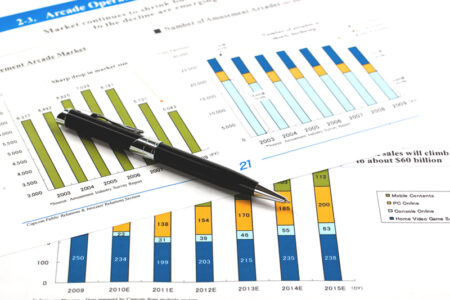- Oil prices ended down 7% last week and are lower this year-to-date, despite Middle East tensions.
- China’s economic downturn, the US shale boom, and clean energy are contributing to current oil price trends.
- Oil market dynamics have changed so much that Saudi Arabia and Russia are diversifying their economies.
The oil markets aren’t what they used to be, and two of the world’s biggest producers of the commodity are feeling the pressure.
Oil prices have been depressed this year because China — the world’s largest oil importer — is in a prolonged economic downturn. The US’ massive boom in oil production over the last 15 years has also kept prices low.
Now, Saudi Arabia and Russia are both trying to diversify their economies away from energy, which makes up about 40% and 20% of their GDP, respectively.
With the shift, Saudi Arabia and Russia are trying to create new economic engines that can sustain the country for decades, Abishur Prakash, the founder of The Geopolitical Business, a strategy advisory firm in Toronto, told Business Insider.
The existential reorientation comes amid what Prakash terms a “geopolitical misalignment,” even in the face of a potential supply disruption.
“The reality is that Middle Eastern oil supplies are in the bull’s-eye of geopolitics. A potential back-and-forth between Israel and Iran, which is increasingly likely, will draw in the region’s energy ecosystem,” he said.
But this year, markets have largely shrugged off supply concerns stemming from the Middle East conflict — a break from history, when regional problems sent prices higher.
Moving away from oil
Saudi Arabia and Russia tied for the world’s second-largest oil producer after the US. Last year, they each accounted for 11% of the world’s oil supply.
While Saudi Arabia and Russia are still the world’s top oil exporters, the US — which posted record oil shipments in 2023 — is fast becoming a competitor for market share.
In 2016, Saudi Arabia launched a grand Vision 2030 plan to transform its oil-dependent economy into a more diversified one that includes tourism and sports as key growth pillars.
Recently, the kingdom has been indicating that it’s frustrated with low oil prices. It’s giving up its $100 per barrel price target and is ready to increase oil output, the Financial Times reported in late September.
This means that Saudi Arabia is looking to corner a larger market share instead of targeting higher profit margins by restricting output.
Russia has also expressed a desire to stop over-relying on oil exports.
“We are moving towards reducing the share of volatile income and reducing Russia’s dependence on oil and gas in favor of boosting our domestic economy,” Anton Siluanov, Russia’s finance minister, told RT Television’s Arabic service earlier this month.
He said that Russia would instead aim to boost its domestic economy but did not specify how.
Russia is already moving its trade eastward to address Western sanctions. Saudi Arabia, too, is looking to sell more oil to developing countries, whose electric vehicle adoption lags behind China and the West.
Asia’s emerging economies are expected to drive global oil demand over the rest of the decade, as the world’s consumption rises from 101.7 million barrels a day in 2023 to 105.6 million barrels per day by 2030, according to a June report from the International Energy Agency.
Prices, renewable energy, and the US all play a role
Despite geopolitical tensions in the Middle East over fears of a widening war, oil prices haven’t been on the climb.
To be sure, oil prices could still soar if the issues in the Middle East worsen.
And there were several price spikes — such as in early October over concerns that Iranian oil facilities could be hit and in August over tensions in the Middle East — but they were shortlived. Oil prices dropped about 7% last week after the concerns subsided.
International benchmark Brent crude futures are down about 4% this year to date to around $74 a barrel, and US West Texas Intermediate futures are down 1.3% so far this year to around $70 a barrel.
A key contributor to the price trend comes from the US, which has witnessed a significant rise in oil production over the last 15 years following the shale oil boom.
Matthew Huber, a Syracuse University professor who specializes in energy, climate politics, and resource geography, said the US has nudged Saudi Arabia out of its role as a swing producer.
“I think the US has now overtaken this role and because we’re not in the Middle East, geopolitical conflict there is less impactful,” Huber added.
Then there’s renewable energy.
“The explosion of electric vehicle adoption in China (and presumably or eventually in the US and Europe) means the writing is on the wall and we’re going to reach ‘peak demand’ for oil sometime soon,” said Huber. “It was always a good idea to diversify one’s economy away from just oil but now more than ever.”
The role of OPEC
The changing dynamics of oil also sharpens the long-standing question of OPEC’s influence and relevance. The oil producer group led by Saudi Arabia accounts for about 30% of global crude production.
“It goes in cycles. They were obviously relevant in the 1970s when they were able to increase prices almost single-handedly,” said Huber.
“But the problem is when oil prices spike, it sends oil companies searching for temporarily profitable oil,” he added, referring to the US shale boom as the most recent example.
OPEC also faces rifts within its members, who have competing priorities.
“The big question now is whether OPEC members are all aligned in terms of oil targets,” said The Geopolitical Business’s Prakash, who added that not all OPEC members may be on board with Saudi Arabia’s plan to boost production.
A potential Trump presidency in the US could drive domestic oil and gas production.
“If OPEC can’t bring everybody together, and members go their separate ways, it will lead to a further polarization of the Middle East,” said Prakash.
“Instead of energy bringing the region together, like it did in the past, energy coupled with geopolitics could fragment the Middle East,” he said.
Read the full article here
















